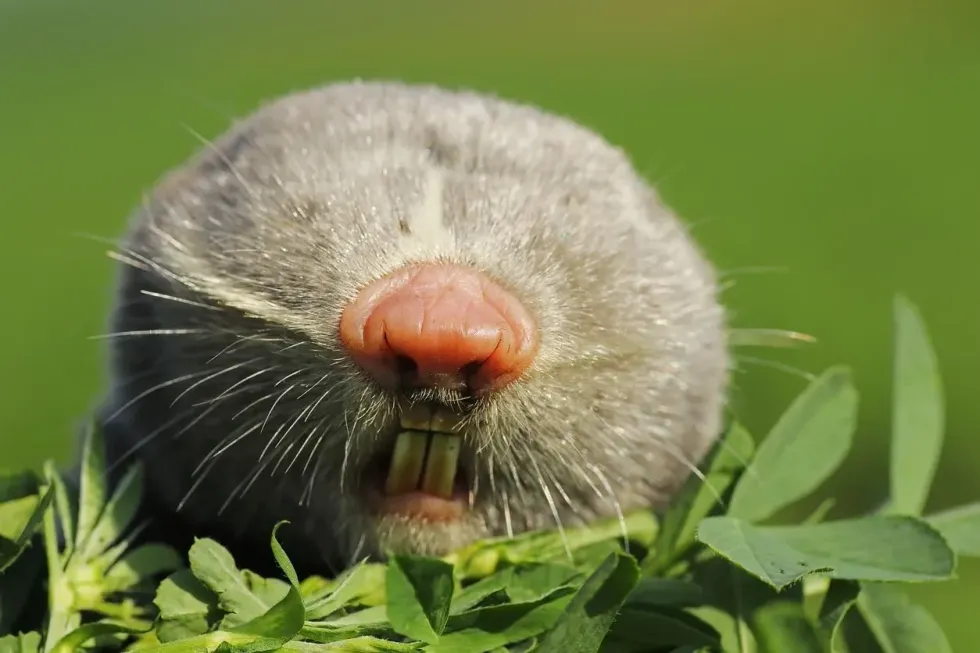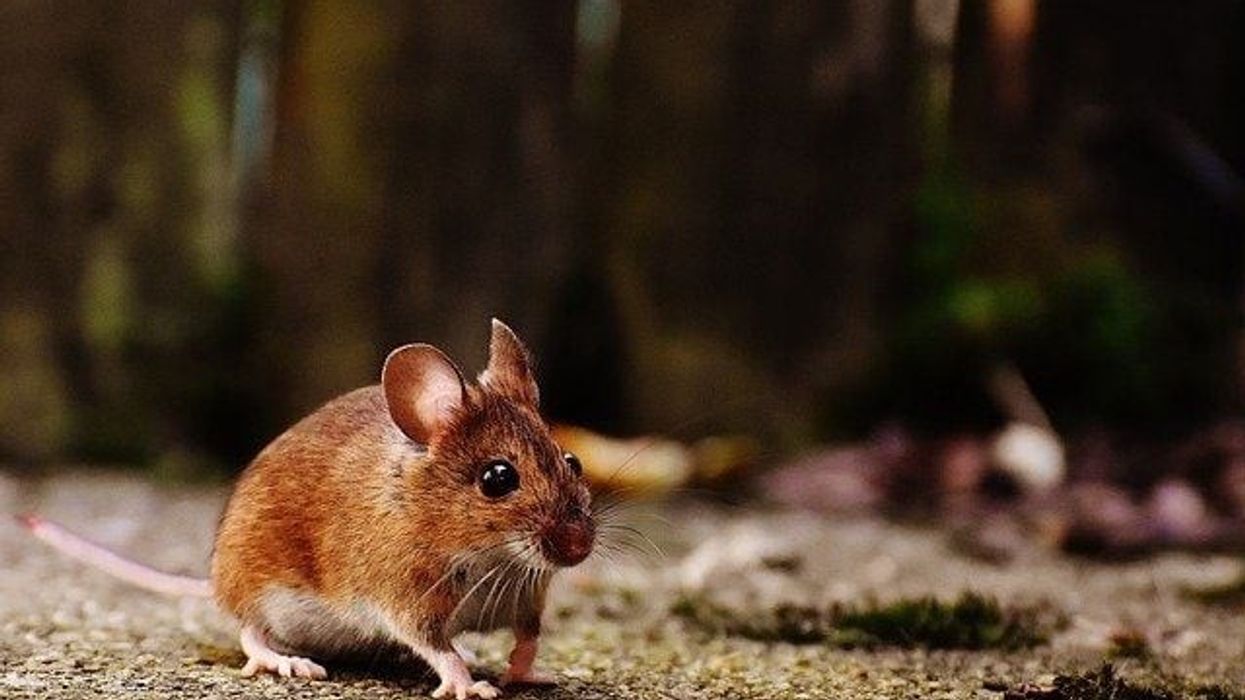There are a total of 60 species of rat worldwide and they come in all shapes and sizes and there are 12 species of mole rats alone. The Lesser mole rat is one among the same family and subfamily Spalacinae. These species of rats are found in colonies. They are seen in regions including Macedonia, Serbia, Montenegro, and Greece.
These species live in Galichica National Park in natural and semi-natural grassland ecosystems where there is arable land for them to feed on. Similar species of mole rats are seen in various other places including a national zoo and other conservation centers and fields.
These mole rats are compared to moles, however, they are completely different. Moles aren't species that are blind, and mole rats are blind.
This article will take a look at some more fun and interesting facts about Lesser mole rats. If you like this article, then visit gopher facts and naked mole-rat facts too.
Lesser Mole-Rat Interesting Facts
What type of animal is a Lesser Mole-Rat?
The Lesser mole rat is a type of mole rat species of animals an belong to the kingdom Animalia and order Rodentia.
What class of animal does a Lesser Mole-Rat belong to?
Lesser mole rats (Spalax leucodon) belong to the Mammalia class of species, family Spalacidae, genera Spalax.
How many Lesser Mole-Rats are there in the world?
The exact number of lesser mole rats in the world is not evaluated however, the naked mole-rat is by far the most popular species of the kind and appears similar to a baby walrus.
Where does a Lesser Mole-Rat live?
They are seen living in regions including Albania, Bosnia Greece, Hungary, Turkey, Iran, North Macedonia, Bulgaria, Serbia, Israel, and Romania among others.
What is a Lesser Mole-Rat's habitat?
Thes blind mole rat's habitat primarily constitutes of underground holes and other similar lesser mole rat dwelling spaces. A lesser mole rat house is located underground - this could be in a farm field, chambers, near a house, national zoo, football fields, or any grassland areas where they can build appropriate shelter and find food.
Who do Lesser Mole-Rats live with?
Lesser mole rats are seen solitary as well as living in colonies they tend to give birth to offsprings underground and take care of them until they are ready to live by themself. They are not ideal around people and in most instances are attacked just like other species of rodents.
How long does a Lesser Mole-Rat live?
Lesser mole rats, like naked mole rats, can live up to 30 years in captivity and have a life expectancy of up to 17 years in the wild. The oldest mole rat ever recorded was a male naked mole rat that died in April 2002 and lived for more than 28 years.
How do they reproduce?
The breeding season occurs once a year from November to March and they give birth to young ones by January to April. During mating season males construct mounds around females breeding mound. The pair has multiple courtship displays which they emit through both sound and body language.
Males are the ones who are more involved in courtship displays. Once both animals are ready to mate males mount females from behind and copulation begins.
Copulation may last 90 minutes. Post this the mates go separate ways. Females then nurse their young, however, males make no investment in the same process.
What is their conservation status?
The lesser mole-rat conservation status is not evaluated by the International Union For Conservation Of Nature (IUCN).
Lesser Mole-Rat Fun Facts
What do Lesser Mole-Rats look like?
Lesser mole rats are small rodent species. Lesser mole rat eyes are hidden by a layer of the skin causing them to be blind. This puts them at most risk from possible predators however they possess excellent listening skills and other sensory nerves to detect predators. They cannot even detect light.
They have two prominent teeth in front which they utilize to bite through food. They possess more muscle mass than bones. They have small feet and toes as well which they use to dig deep underground holes.
How cute are they?
These species of blind mole rats are extremely cute and small to look at and live mostly underground along with their families. However, they are rodent species, and hence you should keep a safe distance from such species while observing them as well.
How do they communicate?
This species of rodent lives mostly underground and individuals leave their holes only for foraging purposes. They live in a colony and communicate to other species of their own kind through touch, acute hearing, pheromones, and multiple sounds.
How big is a Lesser Mole-Rat?
The Lesser mole-rat length is 5.1-13.8 in (13-35 cm) which is five times bigger than the smallest rats, Osgood's Vietnamese rat, which is 5-7 in (12-17 cm).
How fast can a Lesser Mole-Rat run?
A Lesser mole rat has the ability to run at a fast pace without any difficulty. They can run both during the day and night. Although they are blind mole rat species do possess pheromones that help them detect any signs of danger.
How much does a Lesser Mole-Rat weigh?
A Lesser mole rat weighs 1.3 lb (100-570 g). The heaviest rat was a Gambian pouched rat which weighed 3 lb (1.4 kg). Bosavi woolly are known as the largest rats in the world.
What are the male and female names of the species?
Males and females are not addressed differently however, they differ in reproductive functions.
What would you call a baby Lesser Mole-Rat?
A baby mole rat is referred to as a pup until they grow and become independent. They are completely dependent on their mother for most of their needs. Did you know, a mole rat pup weighs less than a penny?
What do they eat?
Mole rats are primarily herbivores and feed on roots, plants, tubers, and bulbs most times. They are known to carry food back into their holes to feed on later as well. They are considered a menace to crop fields since they destroy the produce.
Are they dangerous?
No, these species are not innately dangerous however, they are wild rodent species, and it's safe to maintain a distance while observing them just like other species of rats or mice. They have two strong teeth which they can use to bite through strong things as well.
Would they make a good pet?
No, lesser mole rats are innately wild rodent species and thrive best in their natural environment. It's best for them to stay in their natural habitat as they can be extremely difficult to care for. If you desire to see such species you could just visit a zoo or conservation center.
Did you know...
A Lesser mole rat with no hair can be called a naked mole rat (Heterocephalus glaber) also referred to as sand puppies owing to their bare appearance. Although their shape is similar to other mole rats and native to East Africa and they are all led by a queen similar to the case of bees.
Naked mole-rat populations live primarily in a naked mole-rat colony.
Lesser mole rats live in colonies and similar to bee communities they too have a queen who is considered the head. However, the queen is not born into her position and must earn it.
Rats have been used as guinea pigs in various scientific experiments. A study found out that lesser mole rats or blind rats have cancer resistance abilities.
This is in turn beneficial to the human species since these species of rats can be helpful in studying and finding cures for cancer. This works primarily because these rats release a substance that stops the cancer cells from proliferating further increasing life expectancy. Isn't that an amazing ability which these species' small beings possess?
Do Lesser Mole-Rats have eyes?
Yes, they do have eyes but their eyes are covered by skin and fur which blocks their eyesight. Although this is considered a drawback, it one of their unique identifying features which gives them a unique appearance.
Even though they don't possess proper sight they are capable of surviving in the wild with other coping mechanisms like their excellent hearing capacity.
These rodents also reside close to their holes and if they sense any predators they immediately run back. They are also capable of holding their breath and can survive without the same for longer periods.
How did the Lesser Mole-Rat get its name?
Lesser is derived from the Greek origin meaning minor. Multiple species of minor animals are referred to similarly.
Mole rats by definition are rodent species that are mole-like in nature. They live in underground holes, burrows, or tunnels. All subfamilies in the rodent family possess their own unique and exceptional qualities and abilities although they are considered unwelcomed guests in most instances.
Here at Kidadl, we have carefully created lots of interesting family-friendly animal facts for everyone to discover! Learn more about some other mammals from our Roborovski Dwarf Hamster fun facts and badger interesting facts pages.
You can even occupy yourself at home by coloring in one of our free printable Lesser mole rat coloring pages.










